DOLPHIN HUNTING IN JAPAN
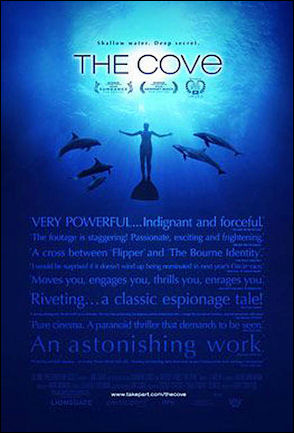 Hunting of whales and dolphins in Japan dates back 5,000 to 8,000 years, with dolphin bones, including a stone tool made with a bone, unearthed in the era. Denmark and island nations in the South Pacific also engage in dolphin hunting, but Japan's annual catch is the largest.
Hunting of whales and dolphins in Japan dates back 5,000 to 8,000 years, with dolphin bones, including a stone tool made with a bone, unearthed in the era. Denmark and island nations in the South Pacific also engage in dolphin hunting, but Japan's annual catch is the largest.
In order to catch dolphins in Japan, a prefectural governor's permission is required. At present, hunting permits have been issued in eight prefectures — Hokkaido, Aomori, Iwate, Miyagi, Chiba, Shizuoka, Wakayama and Okinawa. According to the Fisheries Agency, dolphins are classified as cetaceans but are not among the species managed by the International Whaling Commission.
The Japanese government permits about 20,000 dolphins to be hunted along Japan's coasts each year. In 2008, 1,857 dolphins were caught in Wakayama Prefecture, which includes Taiji, where dolphins are herded to shore into a hidden cove and killed. This a relatively small percentage of the total dolphins killed each year with permission of the Japanese government. Taiji has been singled out for scrutiny and criticism mainly because it uses drive fishing, in which the animals are herded near to shore and slaughtered in shallow water, as opposed to being harpooned at sea.
By some estimates 23,000 dolphin are killed in waters around Japan each. In years past, several towns captured live dolphins in Japan, but now only Taiji does. Taiji is a coastal town of about 3,500 people Wakayama Prefecture, Each year there is a dolphin and porpoise round up in waters off TaijI. As many as 2,500 animals — mostly dal’s and Risso's porpoises are caught and butchered or sold to marine parks. Taiji claims to be the birthplace of Japanese whaling. All around the town are statues and images of whales and dolphins. Dolphins meat is eaten in Taiji and some rural areas.
Japanese fishermen say that bottlenose dolphins are smart but dal's porpoises are dumb. In 1988 over 40,000 dal's porpoises were caught off the coast of Japan. Because porpoises and dolphin reproduce at a much slower rate than fish they have all but disappeared off the coast of Japan and many of the fisheries that harvested them have gone out of business.
Some of the dolphins herded near Taiji are sold for as much as $150,000 to animal trainers for ocean parks. A complete end to the hunts would be difficult, because they have become crucial for the popular and lucrative dolphin shows throughout the country, and captive breeding is rare. Those that are killed are sold for their meat at about $600 a head. Defenders of the slaughter argue that it is their tradition and what they do is no worse than the killing pigs and cattle in slaughterhouses.
Related Articles: CATEGORY: DOLPHINS ioa.factsanddetails.com ; Articles: TOOTHED WHALES: SWIMMING, ECHOLOCATION AND MELON-HEADS ioa.factsanddetails.com ; DOLPHIN CHARACTERISTICS, HISTORY, TAXONOMY ioa.factsanddetails.com ;DOLPHINS AND HUMANS: HISTORY, FISHING TOGETHER AND RESEARCH ioa.factsanddetails.com ; DOLPHIN TOURISM AND SWIMMING WITH DOLPHINS ioa.factsanddetails.com ; ENDANGERED DOLPHINS: HUNTING, FISHING, POLLUTION AND MASS STRANDINGS ioa.factsanddetails.com ; WHALES AND WHALE MEAT DISHES AND CONSUMPTION IN JAPAN factsanddetails.com ; JAPANESE WHALING: SHIPS, CREWS, RESEARCH, NUMBERS AND CRITICISM OF IT factsanddetails.com ; ANTI-WHALING AND JAPAN: SEA SHEPHERD AND THEIR ATTACKS ON JAPANESE WHALE SHIPS factsanddetails.com ; JAPANESE GOVERNMENT SUPPORT OF WHALING AND AND WHY IT HAS ENDURED IN JAPAN factsanddetails.com
Websites and Resources: Britain-based Whale and Dolphin Conservation Society uk.whales.org ; Animal Diversity Web (ADW) animaldiversity.org; National Oceanic and Atmospheric Administration (NOAA) noaa.gov; Fishbase fishbase.se; Encyclopedia of Life eol.org; Smithsonian Oceans Portal ocean.si.edu/ocean-life-ecosystems ; Monterey Bay Aquarium montereybayaquarium.org ; MarineBio marinebio.org/oceans/creatures
Dolphins Hunt in Taiji
Taiji, in Wakayama prefecture on the Pacific coast, 130 kilometers from Osaka, gained notoriety in the Oscar-winning 2009 documentary "The Cove," which showed fishermen herding pods of dolphins into shallow water before killing them with knives. Most of the animals captured during the drive hunts are butchered for their meat, but some are sold to aquariums and sea parks in Japan and overseas. Between 2009, and 2014, after “The Cove” came out, observers have said more than 5,000 dolphins have been killed at Taiji, and an additional 750 have been captured for aquariums. [Source: Justin McCurry, The Guardian, May 20, 2015]
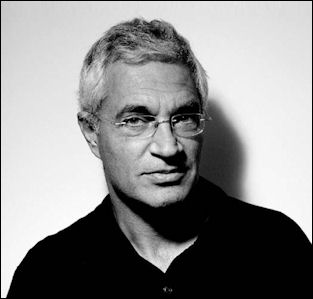
Louie Psihoyos The dolphin hunting season begins in late August or early September. There are about 60 dolphin hunters, with about 20 of them taking part in the dolphin hunt. The have permission from the national and prefectural governments to carry out the hunts and observe a 2,800-dolphin-a-year quota set by the fisheries agency.
The dolphin fisherman use a method called “oikomi ryo” (drive fishing). Taijicho is the only place in Japan where this method is used to hunt dolphins. To catch the porpoises and dolphins about 25 fishermen in specially-equipped speed boats locate a pod of dolphins offshore, encircle it, drive it into a bay by beating steel pipes with a hammer, producing a noise from which the dolphins reflexively flee.The trombone-like metal pipes are banged to disorient the acoustically sensitive dolphins to the shore where they are trapped with a net and slaughtered with lances, turning the water bright red with their blood. Getting a look at the dolphin kill is very difficult. The area is heavily guarded by fishermen and police and trespassers are prosecuted.
One fisherman told the Los Angeles Times that the killing methods used in the late 2000s are more humane than the methods used in the mid 2000s: “Killing in groups, we often missed our mark right behind the dolphin’s head. They die more slowly. There was too much blood. It didn’t look good, and the meat didn’t taste as good.” Now dolphins are separated and killed individually. He said they now hit their mark “99.9 percent” of the time. “I know the spot,” he said. “I can make a kill in 10 seconds.”
The dolphins that are caught are not endangered. Many of them are Risso’s dolphins. Those not selected by aquariums are killed and sent to a meat processing facility. Meat from these animals sell for about $22 a kilogram at the Taiji supermarket.
AP reported: “While killing dolphins for food remains a cultural touchstone, the hunts generate far more money from selling live animals. Bottlenose dolphins sold for meat typically go for several tens of thousands of yen, while prime live animals sell for more than ¥800,000 domestically and much more abroad. In the year ending last March, 79 dolphins were exported for ¥277 million, the government says. [Source: AP, March 3, 2011]
Since 1988, fishermen in Taiji have also hunted small whales in the spring in waters off of Wakayama. They hunt black whale and long-finned pilot whales, species not subject to international regulations, and traditionally have liked to eat whale in the winter. The hunt did not take place in 2011 because the boat usually used, which is based in northern Honshu, was damaged by the tsunami.
In 2011, Taiji fishermen were given permission to extend their annual spring dolphin and whale hunt by one month and catch 200 long-finned pilot whales. They had caught 60 of the whales so far and were granted the extension because they weren’t able to do their annual whale hunt.
Dolphin Activists
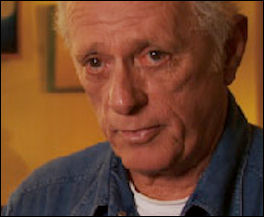
Rick O’Barry Animal rights groups have tried to disrupt the hunts and discourage the sale of dolphin meat which they say contains 3.5 times the amount of mercury contamination permitted in food. Activists from the Whaleman Foundation, including Hayden Panettiere, an 18-year-old actress on the American television show Heroes, have paddled out on surfboards to fishing boats engaged in the dolphin to voice their opposition. Panettiere left Japan soon after she participated but was promptly slapped with an arrest warrant.
The main force behind the dolphin activism in the Taiji area is Rick O’Barry, the former trainer of the dolphins used in the 1960s Flipper television series, who has taken up part-time residence n the Taiji area and has made disrupting the dolphin round up his mission.
Activist are trying to get residents of Taiji to stop eating dolphin and whale. One way they are attempting to do this is by informing them of the dangers of consuming high levels of mercury in dolphins and whales and carrying out mercury poisoning checks on the town’s residents.
Taiji
Taiji is home to about 3,500 people. Many of which have last names last names such as Ryino (“sea-field”) and Seiko (“far seeing,” an attribute for a skilled lookout), which are connected to the whaling trade. They are known for being fiercely independent, ignoring pressure to merge with other communities and ignoring criticism about its whaling and dolphin hunting.
Taiji is regarded as the birthplace of Japanese whaling. The first whale hunts sahed from there took place in the 1600s. There are shrines to whales and a whale museum.. The history of the pursuit is celebrated in a series of festival. In one these festivals men in loin clothes in sleek rowboats chase a mechanized nine-meter-long mechanized whale with an artificial blowhole that shoots out jets of water. It is a re-creation of old hunts when 200 men in dozens of boats with knives and harpoons set out to kill a whale. At night there are fireworks displays with lights in the shape of whales and dolphins.
The people of Taiji view dolphins as being little different from other animals. Hunting them is akin to big game hunting or marlin fishing, Barry disagrees, He told AP, “Dolphins have a brain larger than the human brain. They’re self-aware, like people and like the great apes. They’re not fish, chickens, cows, pigs or other domesticated animals.”
The Cove
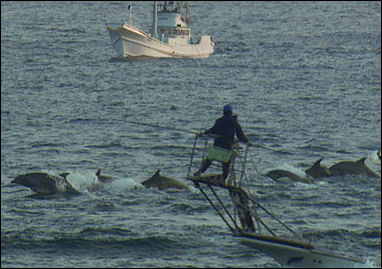 The Cove is a documentary about the dolphin round up and slaughter in Taiji. Financed by the billionaire owner of Netscape and made by National Geographic photographer Louis Psihoyos, who also stars in it, it is a slick film that not only graphically captures the slaughter of the dolphins it also introduces an interesting cast of characters and highlights the beauty and intelligence of dolphins.
The Cove is a documentary about the dolphin round up and slaughter in Taiji. Financed by the billionaire owner of Netscape and made by National Geographic photographer Louis Psihoyos, who also stars in it, it is a slick film that not only graphically captures the slaughter of the dolphins it also introduces an interesting cast of characters and highlights the beauty and intelligence of dolphins.
The Cove won the 2009 Audience Award at the Sundance Film Festival. John Glionna wrote in the Los Angeles Times, the film “portrayed Taiji as a charming burg with a darker self, a place where Norman Rockwell meets Norman Bates...To foil efforts to block their access, the filmmakers used divers with sophisticated underwater equipment, aerial drones, as surveillance and military-style cameras. The result is part graphic horror flick, part suspense thriller and part “gotcha” movie, its dramatic scenes of determined undercover police giving chase to cameramen ending with chilling footage of churning water stained red.
“The Cove” won the Academy Award for Best Documentary in 2010. The people of Taiji were quite upset about the award and the negative way their town was portrayed. They complained that parts of the film were inaccurate and misleading and the viewed their portrayal of dolphin hunting as intolerant of cultural difference. In one sequence in the film scenes of dolphin activists trying to convince the two residents that eating dolphin is dangerous because of the high mercury content are interspersed with images of people with Minamata disease.
“The Cove” was shot between October 2005 and September 2008. It shows confrontations between the filmmakers and fishermen and has interviews with anti-whaling activists. Psihoyos denies the film castes Japan in a bad light. He told the Yomiuri Shimbun, “I’m not sure why the Taiji fishermen are upset. It’s not a Japan “bashing” movie. It’s a love letter..I’d love to come back to Japan.” Psihoyos also said, “The real reward to me will occur when the dolphin slaughter is stopped, dolphins go free and the [Tajicho] cove is returned to the people of Japan as a national park.”
The fishermen are characterized as a bunch of tough rednecks. Some complain the context in which they and other Taiji residents agreed to appear the film was misleading. One fisherman told the Yomiuri Shimbun , “Fishing is our occupation and pride.. Local fishermen have been shocked that their work is unfairly criticized in the film.” Another fisherman in his 60s said, "[We've been] labeled as evil around the world."
Many Japanese are not aware of the slaughter. The Cove was released free on the Internet in Japanese to help enlighten them.
Showing The Cove in Japan
 “The Cove” was shown in a couple dozen theaters in Japan in the summer of 2010 and was a surprising box office success. Police were posted at some theaters on the opening days in anticipation of trouble. Some loudspeaker protests accusing the film of being “anti-Japanese” appeared at several locations in Japan, including theaters showing the film, the offices of the distributor of the film and the home of the president of the distributor. One group said. “We won’t stand for the hypocrisy and frivolity of theaters that support Western’s anti-Japanese action by showing such a film.”
“The Cove” was shown in a couple dozen theaters in Japan in the summer of 2010 and was a surprising box office success. Police were posted at some theaters on the opening days in anticipation of trouble. Some loudspeaker protests accusing the film of being “anti-Japanese” appeared at several locations in Japan, including theaters showing the film, the offices of the distributor of the film and the home of the president of the distributor. One group said. “We won’t stand for the hypocrisy and frivolity of theaters that support Western’s anti-Japanese action by showing such a film.”
A couple of theaters bowed to pressure and cancelled plans to show the film. Others got court injunctions to keep protesters away. A staff member at one theater that decided to show it told the Yomiuri Shimbun . “We got numerous protest calls and received a notice saying protest activities would be staged.” A worker at another theater that decided not to show it said, “We’re concerned that the controversy would create an environment where our customers can’t enjoy movies safely.” All n’ all there wasn’t much trouble and the film did generate some discussion aboy dolphin hunting in the media.
On 24-year-old graduate student that say it told Kyodo news, “It was really cruel to see the seawater turn red with the dolphins’ blood and I could become aware of what I did not know. The film will provide opportunities to consider the right and wrong of dolphin hunting. He added though,, “I thought it focuses inky on what the producers wanted to say, while paying less attention to fishermen’s views.”
In Japanese versions of the film some faces are blotted out and disclaimers were added that those interviewed were not protesting or supporting the dolphin issue.
Taiji After the Cove
Residents of Taiji said the film has brought a lot of unwelcome, negative attention. Although few of them actually participate in the hunt they defend the practice or keep their mouth shut, they say, out of fear of having the words misconstrued. [Source: AP, August 25, 2010]
Taiji residents who are worried about their town’s traditions and existence say they are more concerned by the number of younger people moving away than they are by pressure from dolphin activists. One 61-year-old man told AP, “People here don’t really care about this, They’ve been living the slow life for 400 years. Even is foreigners suddenly appear, and Japanese, waving flags and saying, “It’s terrible, it’s terrible; we’ve always eaten this way.”
The town officials say the attention is largely a nuisance. "We're a small town, we really can't get anything else done while this is going on," said Masahiro Mukai, who normally runs the town's volunteer fire department but now goes on regular patrols to monitor the activists.
Ironically, one result of the increased recognition is that stocks of frozen Taijicho dolphin meat have sold out, according to a member of a local fishery cooperative.
Taiji Residents and Mercury
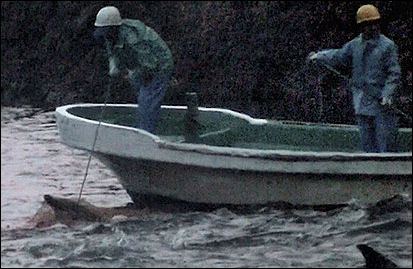 Local residents began checking themselves for high mercury levels several years before the film came out and stop serving dolphin meat to children at schools. So far no ill effects have been uncovered related to eating dolphin.
Local residents began checking themselves for high mercury levels several years before the film came out and stop serving dolphin meat to children at schools. So far no ill effects have been uncovered related to eating dolphin.
In May 2010, the Yomiuri Shimbun reported that hair samples taken from the hair of Taiji residents contains four times the amount of mercury found in hair samples taken from Japanese living elsewhere. In tests carried out by the National Institute of Minamata Disease, the average mercury concentration among men was 11 part per million (ppm), while that for women was 6.63 ppm. Forty-three residents had concentration above 50 ppm, the safely limited set by the World Health Organization. Among the Taiji residents surveyed, 36.8 percent said they had eaten whale or dolphin in the previous month.
Taiji Dolphin Hunt in 2010
In 2010 the dolphin hunt started in early September. In late September a European conservation organization called Back Fish said in its website that it was going to cut the nets of six pens holding dolphins. Later someone did cut the nets and some dolphins were able to escape and swim out to sea through the cut nets. "[The group] likely planned this act of harassment to generate publicity for itself," a senior official of the Wakayama prefectural police told AP.
The group of save-the-dolphins activists that showed up in 2010 was bigger than previous years. The success of “The Cove” has emboldened activists and they were given more money. A number of international activist groups, including the U.S.-based Sea Shepherd Conservation Society, came to Taijicho to step up their calls for an end to the practice. Some activists have stayed on in a neighboring town, intending to monitor the entire hunting season. Japanese right wing groups threatened to show up to defend the hunt. A more liberal group planned a “Peace Walk” to honor Taiji.
Mikoto Hata wrote in Yomiuri Shimbun, At 10:20 a.m. Thursday, a row of about 10 fishing boats could be seen sailing toward Hatajiri Bay in Taijicho, Wakayama Prefecture. Ahead of them, a pod of about 20 dolphins was swimming toward the shore, as if being herded. Once the dolphins had entered the bay, another boat traveled across the 100 meter-wide mouth of the bay, dragging behind it a net to prevent the dolphins' escape. These events were being captured on video camera by activists on the beach.” [Source: Mikoto Hata, Yomiuri Shimbun, November 10, 2010]
So far this year, fishermen have set out on only a handful of expeditions. "To avoid trouble, we've reduced the number of fishing occasions," a senior member of a local dolphin-fishing association told the Yomiuri Shimbun. AP reported: The influx has had little effect. The town's two dozen dolphin hunters, most of whom are gruff ex-whalers, ignore the protesters as unwanted foreign pressure on their traditions, and have responded with elaborate tarp structures to hide the gorier aspects of their work. “
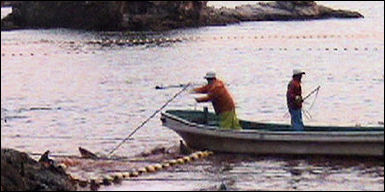 Scott West, a 52-year-old American member of Sea Shepherd, told the Yomiuri Shimbun he and other activists have been visiting the bay almost every day to film the hunting. They have posted video recordings on the Internet. West and his colleagues are staying at a hotel in a town next to Taijicho. West said he plans to stay through December, with other Sea Shepherd members coming and going, with the intention of continuing to monitor the hunting until the end of the season.
Scott West, a 52-year-old American member of Sea Shepherd, told the Yomiuri Shimbun he and other activists have been visiting the bay almost every day to film the hunting. They have posted video recordings on the Internet. West and his colleagues are staying at a hotel in a town next to Taijicho. West said he plans to stay through December, with other Sea Shepherd members coming and going, with the intention of continuing to monitor the hunting until the end of the season.
The mayor of Taiji Kazutaka Sangen said the annual dolphin hunts would continue. He told AP, “We will pass down the history of our ancestors to he next generation, preserve it, We have a strong sense of pride about this, . So we are not going to change our plans for the town based in the criticism of foreigners.”
Discussions Between Taiji Residents and Dolphin Activists
In November 2010 a town hall meeting between fishermen and activists — the first between the two sides — failed to bring them closer together. The fishermen called for their culture to be respected, while the activists argued the dolphin hunting was inhumane. The Taiji town government had been refusing to hold any talks with the anti-hunt groups on the grounds that the hunt is legal and conducted with the permission of the prefecture's governor. But after a civic group in the prefecture asked both sides to cooperate to create an opportunity for thinking about dolphin hunting, they agreed to hold the meeting. [Source: Kyodo November 2, 2010]
Kyodo reported: “The activists from three anti-hunt groups, including the U.S.-based Sea Shepherd Conservation Society, said that although they understand the practice is part of local culture and a tradition, dolphin hunting is inhumane and the hunt's long standing does not justify its existence. The town's representatives, including Taiji Mayor Kazutaka Sangen, argued that whaling and dolphin hunting provide their livelihood and that it is important to have a spirit of mutual respect for different cultures.”
“Due to security concerns, the high-profile meeting in the traditional whaling town in western Japan was not open to the general public and only journalists were allowed to observe the exchange of views, which was conducted through interpreters. Five people represented the town at the meeting, including the mayor and senior officials of a local fisheries cooperative association. They sat down across from four environmentalists on stage at a local community hall.”
 At the meeting, Katsutoshi Mihara, chairman of the Taiji Town Assembly, said, "We have been living by relying on marine resources for our livelihood. We can't just let you force your values on us." Scott West, a member of Sea Shepherd, said some things have to end when the time comes, and that he had no plans to terminate his protest activities. When asked by the dolphin conservationists what they can do for the benefit of the town, Mayor Sangen said, "Things about the town will be decided by its residents."
At the meeting, Katsutoshi Mihara, chairman of the Taiji Town Assembly, said, "We have been living by relying on marine resources for our livelihood. We can't just let you force your values on us." Scott West, a member of Sea Shepherd, said some things have to end when the time comes, and that he had no plans to terminate his protest activities. When asked by the dolphin conservationists what they can do for the benefit of the town, Mayor Sangen said, "Things about the town will be decided by its residents."
“In addition to Japanese journalists, many reporters and photographers from foreign media organizations, including from the United States and the Middle East, came to cover the event,” Kyodo reported. Police vehicles patrolled around the community hall where the meeting took place.” In Tokyo, Chief Cabinet Secretary Yoshito Sengoku commented on the meeting, saying, "Dolphin hunting has been part of Japanese culture since olden times. There is much criticism, but I hope (people in Taiji) will develop their discussions in a way to win understanding. It will become more important in (the era of) globalization to cherish one's indigenous culture.”
Setting Up Dolphin Activist Groups in Japan
The stalemate and resentment by Taiji's fishermen has led some dolphin activists to seek different methods to achieve their goal and having dolphin hunting ended. "I'm trying to get a grassroots movement going in Japan. I've come to realize, you can't show up with a big stick and tell them what to do," said O'Barry. [Source: AP, March 3, 2011]
O'Barry and others are trying to recruit more Japanese to their cause, publishing materials in Japanese and holding meetings with those who show an interest. Longtime Japanese activists like Masato Sakano have organized crowded forums in Tokyo to discuss the implications of "The Cove" and the Taiji hunts. The environmental group Sea Shepherd has started a "Cove Guardian" program that brings visitors, new groups such as "Taiji Action Group" and "Eyes on Taiji" have sprung up, and many people have come on their own. [Ibid]
While many in the country feel the town should be allowed its traditional ways, others are coming to Taiji to protest or simply see for themselves. "A lot of foreigners are helping us, but if we don't do something on our own, this problem won't be resolved," Yoshiko Wada, 33, a hairdresser who has visited the town six times, told AP. [Ibid]
With Taiji's fishermen unlikely to bend to foreign pressure and the strong ties to Japan's aquarium industry, a quick end to the hunts looks unlikely. Some foreign activists have called for protests directly at aquariums, but others question that approach. "If we can't shut down aquariums in our own countries, how do you go to the Japanese and ask them to do that here?" said Michael Dalton, an Australian activist living near Taiji. [Ibid]
Sea Shepherd Activist Acquitted in Assault in Taiji
In February 2012, Kyodo reported: A Dutch activist linked to radical antiwhaling group Sea Shepherd Conservation Society was acquitted of assaulting a Japanese worker in the whaling town of Taiji, Wakayama Prefecture, in December. In his ruling on Erwin Vermeulen, 42, Judge Satoshi Shibayama said the Wakayama District Court could not rule out the possibility his accuser was lying and that "there remains doubt over the credibility of the testimony, which is the only evidence" in the case. [Source: Kyodo, February 23, 2012]
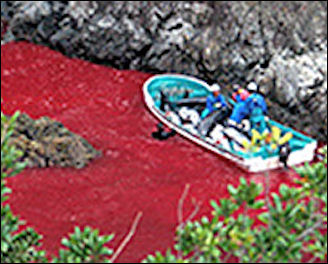 Vermeulen was arrested for allegedly shoving a unnamed man in the chest using his left hand as he tried to force his way onto a seaside road where public access was banned because dolphins were being moved. Vermeulen denied acting violently toward the man, who was blocking his way. During the trial, Vermeulen's counsel argued that the plaintiff's testimony was not credible and said it would have been physically impossible for the Dutch activist to shove him because both his hands were occupied at the time.
Vermeulen was arrested for allegedly shoving a unnamed man in the chest using his left hand as he tried to force his way onto a seaside road where public access was banned because dolphins were being moved. Vermeulen denied acting violently toward the man, who was blocking his way. During the trial, Vermeulen's counsel argued that the plaintiff's testimony was not credible and said it would have been physically impossible for the Dutch activist to shove him because both his hands were occupied at the time.
In January the Los Angeles Times reported: Vermeulen was arrested by Wakayama Prefecture police after attempting to film the transfer of a dolphin into holding pens at the Dolphin Resort Hotel, one destination for dolphins rounded up in Taiji. A Dutch national, Vermeulen is being held at the Shingu detention center and has not been allowed to make any public statement. However, Sea Shepherd activists who were on the ground in Taiji say he never committed any assault and police are using the accusation to destroy the Cove Guardians project. [Source: Dean Kuipers, Los Angeles Times, January 5, 2012]
“Erwin did not break any laws for filming,” Scott West, another Cove Guardian volunteer still in Taiji, said via email. “He did cross a temporary barricade at the Dolphin Resort Hotel and was escorted out of the temporary restricted area by Wakayama prefecture police. He was given a warning. Erwin was not arrested until a young male trainer from the Dolphin Resort Hotel stated to police that Erwin had pushed past him at the barricade. The police jumped on this opportunity and arrested Erwin for simple assault.”
After the assault charge, police raided a hotel where the Cove Guardians have been staying, using a warrant looking for Vermeulen’s footage to confiscate all computers, phones, hard drives, photos, cameras and any other recording device used by the other three members of the group who were there. After all media cards were removed, the hardware was returned.
West says the Cove Guardians program has been successful in saving some dolphins. “The 2010-11 season is the first we had Cove Guardians on the ground every day of the season and it saw the numbers (from what were previously listed) cut in half. This season, 2011-12, the numbers we have observed are at about half of what they were last season at this time,” West wrote.
The activists say they limit their actions to documenting and witnessing the dolphin roundups and don't directly interfere in them. In response to the monitoring effort, the dolphin hunters have spread huge tarps across the cove, and so many police are on site to protect the hunt that the government has built a new police substation to house the officers. The activists hope those actions help make the capturing of dolphins too expensive to continue.
Japanese Aquariums Vote to Stop Buying Taiji Dolphins as They Are Exported Abroad
In 2015, Japanese aquariums voted to stop buying Taiji dolphins after being threatened with expulsion from the world’s leading zoo organisation. Justin McCurry wrote in The Guardian: “The Japanese Association of Zoos and Aquariums (Jaza) voted to stay part of the World Association of Zoos and Aquariums (Waza) on Wednesday, a move that in effect ends the procurement of Taiji dolphins by aquariums and sea parks in Japan.[Source: Justin McCurry, The Guardian, May 20, 2015]
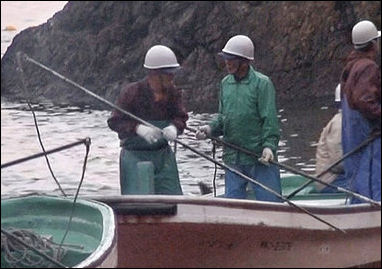 “The decision comes weeks after Waza suspended its Japanese members and threatened them with expulsion unless they ended their “unethical” association with the town. A majority of the 89 zoos and 63 aquariums belonging to Jaza voted to remain in the global zoo organisation, Japanese media reported. Voting to retain their commercial ties to Taiji would have led to expulsion and threatened their ability to acquire rare animal species from zoos and aquariums overseas through a global database.
“The decision comes weeks after Waza suspended its Japanese members and threatened them with expulsion unless they ended their “unethical” association with the town. A majority of the 89 zoos and 63 aquariums belonging to Jaza voted to remain in the global zoo organisation, Japanese media reported. Voting to retain their commercial ties to Taiji would have led to expulsion and threatened their ability to acquire rare animal species from zoos and aquariums overseas through a global database.
“Swiss-based Waza suspended its Japanese members on 22 April after they ignored requests to stop acquiring Taiji dolphins, almost all of them bottlenoses. “The suspension came soon after the Guardian revealed that Waza had been targeted in a court action launched by Australia for Dolphins. The group accused it of being complicit in the infamous hunts by failing to take decisive action against Japanese aquariums.
About half of the live dolphins caught in Taiji in the early 2010s were exported to China and other countries. AFP reported: “A total of 760 live dolphins were sold between September 2009 and August 2014 in Japan, Kyodo News said, quoting data from Japan’s Fisheries Research Agency and other statistics. They show that 354 were exported to 12 countries, including 216 to China, 36 to Ukraine, 35 to South Korea and 15 to Russia. One dolphin was exported to the United States. [Source: Agence France-Presse, Sunday 7 June 2015 05.35 BST
“Eleven dolphins were also exported to Thailand, followed by 10 each to Vietnam and Saudi Arabia, seven to Georgia, five to Tunisia and four each to Egypt and the Philippines, Kyodo said. UN data showed the export of live dolphins from Japan between 2009 and 2013 was almost entirely to zoos or aquariums, Kyodo added. All live dolphins are only supplied from Taiji.
Taiji Dolphin Hunt in 2019
Reporting on the Taiji dolphin hunt in September 2019, Simon Denyer wrote in the Washington Post: “A line of eight boats came into view just below the horizon. A pod of about a dozen dolphins broke the glassy surface off Taiji, the center of Japan’s annual dolphin hunt, which continues despite international outrage. Fishermen banged on semi-submerged poles to create an underwater wall of sound, driving the dolphins toward a narrow cove along the hilly, wooded Pacific shoreline.[Source: Simon Denyer, Washington Post, October 14, 2019]
“As the pod entered, a net was drawn across the cove. The dolphins swam in narrower and narrower circles, a calf sticking close to its mother. Then came the sound of thrashing. A slaughter followed — hidden from view under a temporary tarpaulin roof. The waters of the cove turned pink with blood. [Source: Simon Denyer, Washington Post, October 14, 2019] On this day in early September — the second of the hunt — 11 Risso’s dolphins were cut up for meat. The calf was released back into the ocean, facing likely death without its mother’s care.
“Over the following two days, 13 bottlenose dolphins were captured alive — young, healthy animals selected from the pod by a team of Japanese aquarium trainers working alongside the fishermen. The animals fetch about $500 for meat. A live bottlenose, the easiest species to train, is worth between $8,000 and $10,000, and more than $40,000 after training, experts say. The live dolphins are mostly sent to China, where the marine park industry is booming and largely outside the international rulemaking that has turned its back on Taiji’s catch. China alone imported more than 200 live dolphins and whales from Japan in 2017 and 2018, trade data shows.
Under a quota system, Taiji’s fishermen are allowed to catch 1,749 dolphins or small whales from nine species during the six-month hunting season. Dolphins from Taiji have supplied aquariums across the world for decades — in Japan, the United Arab Emirates, Mexico, Thailand, Russia and elsewhere. They have even been purchased by the U.S. Navy for mine detection and other tasks.

Activists at Taiji Dolphin Hunt in 2019
Simon Denyer wrote in the Washington Post: “Taiji is ground zero for the captive dolphin industry,” said Rachel Carbary from Ric O’Barry’s Dolphin Project, who came to Taiji to live-stream the hunt, is founder of Empty the Tanks, a group campaigning to end all dolphin and whale captivity. [Source: Simon Denyer, Washington Post, October 14, 2019]
Activists from Sea Shepherd Conservation Society marched through town in black T-shirts and carrying their modified skull-and-crossbones flag. Locals accused the activists of constantly goading them, thrusting video cameras in their faces and showing photos of dead whales and dolphins to schoolchildren. Right-wing Japanese nationalists rallied to the cause and staged counterprotests in Taiji.
These days, the town is calm, but wary. Police trailed Carbary as she went about her filming, while a Japan Coast Guard ship sat offshore to guard the hunt. “The people of Taiji have been engaged with whaling for more than 400 years; it’s part of our life,” said Yoshifumi Kai, a senior executive of the Taiji Fisheries Association. “We don’t have any industries here, and the available land is limited. In this environment, we have no other way but to try to gain our living from the sea.”
But times may be changing — slowly. Sea Shepherd activists no longer come here. That is partly because Japan’s immigration authorities have banned many of them from entering the country. This year, they were replaced with a group of more than 30 Japanese animal rights activists, who marched peacefully through Taiji on Sept. 1 chanting slogans and holding banners to protest killing and capturing dolphins. On the way, they marched past Taiji’s Whale Museum. Inside, oblivious tourists from across Japan oohed and aahed as dolphins performed tricks for fish to cheesy rock music, and children lined up to stroke them. Speaking after a recent performance, several families said they seldom or never eat whale or dolphin meat, but all defended Japan’s “food culture.” “Eating this meat is part of our culture; it comes naturally,” said a 50-year-old man from the nearby city of Wakayama.
Solomon Island Dolphin Hunters
Japan isn’t the only place where dolphin hunting is done. Al-Jazeera reported: In a remote Pacific paradise in the Solomon Islands, a village continues a centuries-old tradition that has sparked outrage around the world. They hunt and kill dolphins, often hundreds at a time, a controversial practice they revived in 2013.. [Source: Al-Jazeera, March 7, 2014]
“The village tribesmen say they hunt the marine mammals for their meat and teeth to pay for wedding dowries, easing the impact of rising sea levels on crops and livelihoods. For two years, the Earth Island Institute, an environmental charity, persuaded villagers to stop hunting dolphins by promising direct cash payments and alternative work programmes worth up to $400,000 to Fanalei and two other villages, a huge windfall in the Solomons.
Related Articles: See ENDANGERED DOLPHINS: HUNTING, FISHING, POLLUTION AND MASS STRANDINGS ioa.factsanddetails.com
Image Sources: The Cove, Rotten Tomatoes, Sea Shepherd, Wikimedia Commons
Text Sources: New York Times, Washington Post, Los Angeles Times, Daily Yomiuri, Times of London, Japan National Tourist Organization (JNTO), National Geographic, The New Yorker, Time, Newsweek, Reuters, AP, Lonely Planet Guides, Compton’s Encyclopedia and various books and other publications.
Last updated August 2020
